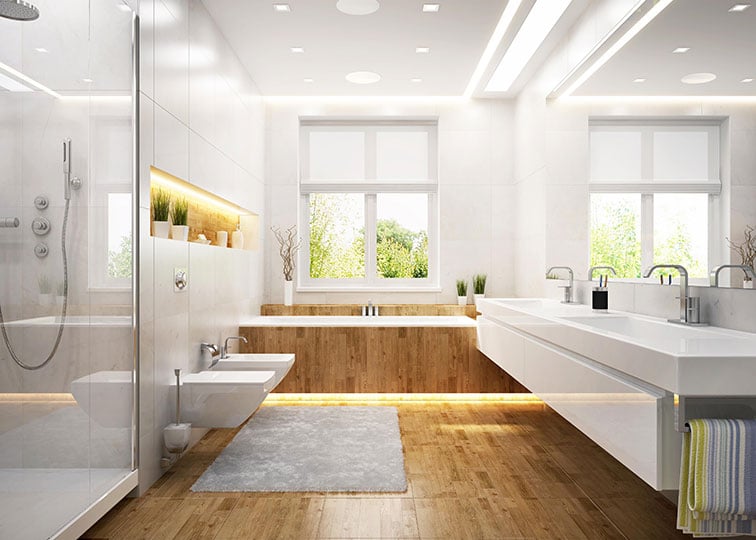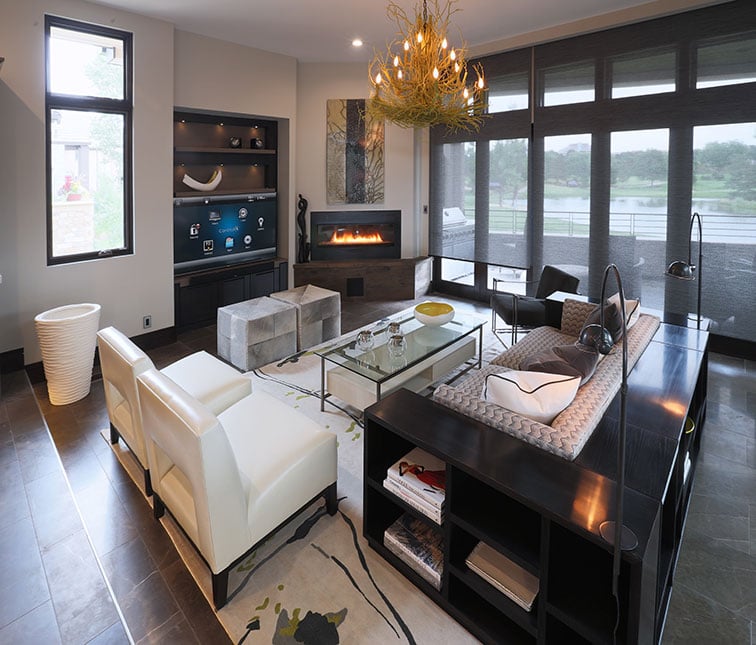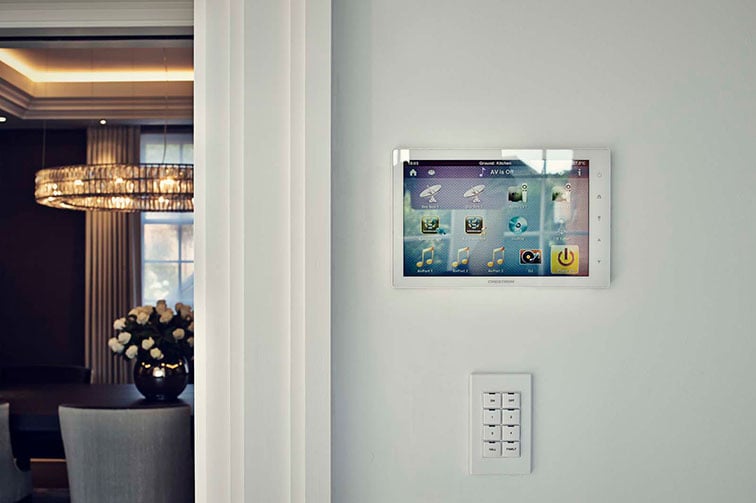How the latest home tech can fit in your home
With their promises of making life easier and saving time, automation technology for your home sounds like a no-brainer. But in a crowded marketplace of systems and devices, it can be tricky to know what’s right for your lifestyle, let alone how to retrofit it without trailing cables around a beautifully decorated home. There’s nothing worse than contemplating removing designer wallpaper to bury cables or wondering where to mount a chunky control panel so it’s not in view but still connected to WiFi.
Automatic blinds and windows
From blinds that raise and lower at set times in the morning, or when you’re away to make it look like someone’s at home, to windows that close when a sensor detects rain, automation can provide lots of useful features. However, extra functions can mean extra parts to conceal and some kind of power source.
Battery powered blinds are ideal if there’s no electricity supply nearby but you’ll need to replace batteries periodically. Solar power can be used for automatic roof windows but make sure you choose one that can still be manually operated (although Velux’s Integra will charge for up to 600 operations, so you can continue to use it throughout winter).
The other option is a wired-in motor. Low-voltage motors are ideal for smaller blinds but still need a transformer hiding behind a header or pelmet. A mains voltage motor is good for larger blinds but will need a substantial headrail to conceal it. Make sure you ask a qualified electrician to install wired-in motors.
Velux’s Integra roof window closes when it senses rain and has pre-defined opening and closing programmes or you can create your own.

Image source: Velux
Audio systems and speakers
Whether it’s music to cook to or listen to as you shower, a good sound system is a must. Smart systems are not only a sleek option for your home but also practical. Bluetooth-enabled products, such as bathroom cabinets and showerheads, are the simplest solution and allow you to stream music from your phone. However, as they’re within a product, their placement is limiting. A more flexible option is a ceiling speaker that can be connected to power via a fused spur of your lighting circuit (note that this will require a qualified electrician or plugged into a socket, such as Lithe Audio’s IP-rated, Bluetooth-compatible version. Alternatively, a cabled-in system can still be a good option, as many hubs can be installed in an adjacent cupboard, kitchen cabinet or outside a room. These will always be easier to install if speaker and power cables are put in place beforehand.
Lithe Audio’s speakers don’t need to be connected to a separate amplifier or cabling within walls, plus they’re Amazon Alexa-enabled.

Image source: Lithe Audio
Read more: Smart home improvements to save you money
Lighting
Switching lights on and off remotely isn’t just convenient, it also opens up a world of choice. You could, for example, pick different colour temperatures (e.g. from cosy warm white to crisp cool white), a rainbow of colour-changing tones and vary brightness without fitting a dimmer switch. App-operated bulbs can also be controlled when you’re not at home to make it look like you are. Some wireless bulbs, such as Lifx, work entirely from an app, while others, such as Hive and Philips Hue, require a separate hub – whether that’s their own or a standalone hub, such as Control4 or Samsung SmartThings.
Control4 works with connected devices, such as lighting, and can be operated with remotes, keypads, touchscreens or your TV, working even when Wi-Fi drops out.

Image source: Control4
Read more: Lighting ideas for your bedroom
Whole home systems
Choosing different wireless automation can mean ending up with a smartphone full of apps, as most run on their own systems and won’t ‘talk’ to each other. One solution for this is Amazon Alexa or Google Assistant, as more manufacturers are making their automation compatible with the hub. The other is a complete smart home system but for this option, it helps to have the infrastructure in place. ‘The fastest, most secure and reliable communications require a cable,’ explains Phil Pini, head of residential development Europe at Crestron. ‘Cabling is often overlooked within the initial stages of a project, but the expense of cabling a property for the future is low compared to channelling walls and redecorating. The remedial works needed for a retro-fit installation can cost more than the hardware itself. However, hard wiring ensures permanent, reliable connectivity or you can use proprietary radio frequency (RF) technology.’
Sleek Crestron touch control panels blend in seamlessly, but can also be hidden behind doors or within furniture.

Image source: Crestron
How to integrate cables
The best way to disguise cables is within ceiling voids or modern construction plasterboard walls. The older the building, the more challenging this will be as you may have to channel cabling into walls. ‘Other methods include using fibre optic cabling that can be as thin as a human hair and can transport communications without disrupting the interior,’ says Phil Pini. ‘This is not a cheap method but if the design is worth keeping, this can be a last resort.’





Roof windows add so much light and style to almost any room. In my experience, however, they can be a real nightmare if they are out of reach. Whilst I made the mistake of not choosing a electric option, I would urge everybody too.
There are a few good brands I’ve come across. Velux and Fakro are just a few, although a little premium for some. You can find cheeky discounts on Fakro roof windows at places such as https://www.roofingmegastore.co.uk/roofing-brands/roof-windows/fakro.html (hope the link is okay). Do always get a qualified professional to install them though, the hassle of doing it yourself is simply not worthwhile.